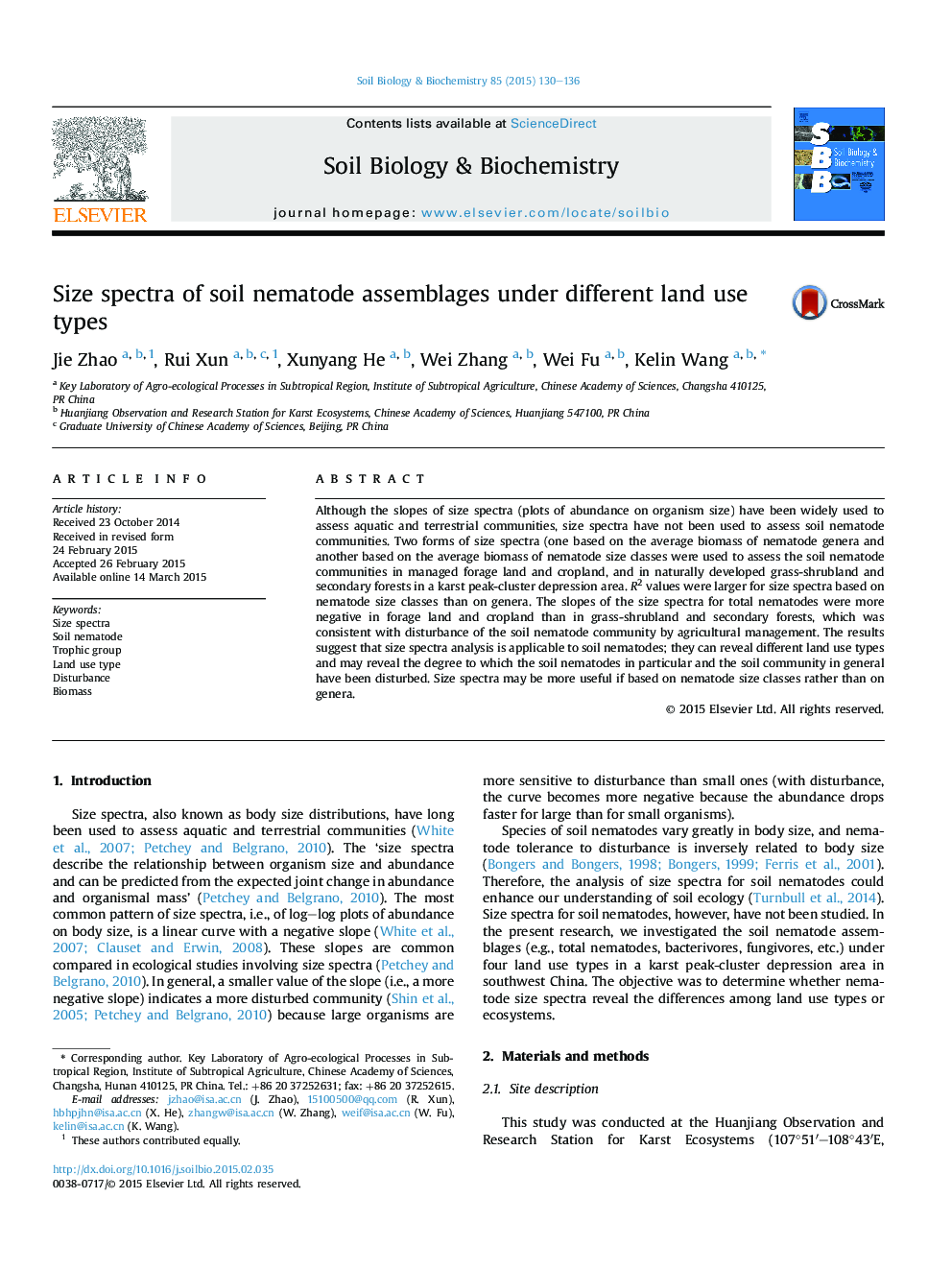| Article ID | Journal | Published Year | Pages | File Type |
|---|---|---|---|---|
| 8364198 | Soil Biology and Biochemistry | 2015 | 7 Pages |
Abstract
Although the slopes of size spectra (plots of abundance on organism size) have been widely used to assess aquatic and terrestrial communities, size spectra have not been used to assess soil nematode communities. Two forms of size spectra (one based on the average biomass of nematode genera and another based on the average biomass of nematode size classes were used to assess the soil nematode communities in managed forage land and cropland, and in naturally developed grass-shrubland and secondary forests in a karst peak-cluster depression area. R2 values were larger for size spectra based on nematode size classes than on genera. The slopes of the size spectra for total nematodes were more negative in forage land and cropland than in grass-shrubland and secondary forests, which was consistent with disturbance of the soil nematode community by agricultural management. The results suggest that size spectra analysis is applicable to soil nematodes; they can reveal different land use types and may reveal the degree to which the soil nematodes in particular and the soil community in general have been disturbed. Size spectra may be more useful if based on nematode size classes rather than on genera.
Related Topics
Life Sciences
Agricultural and Biological Sciences
Soil Science
Authors
Jie Zhao, Rui Xun, Xunyang He, Wei Zhang, Wei Fu, Kelin Wang,
